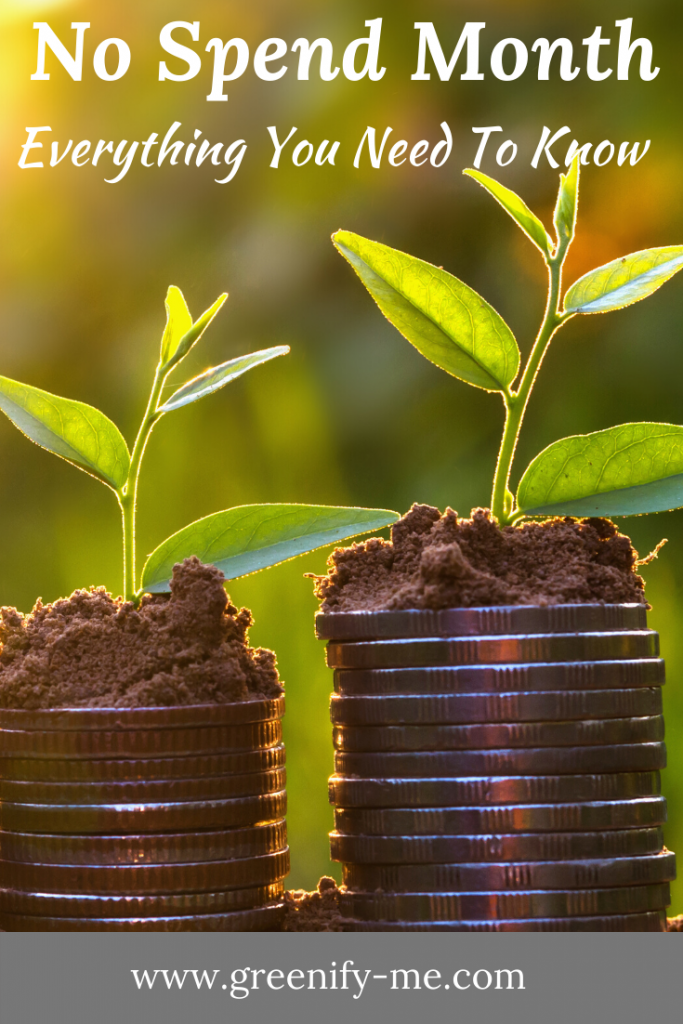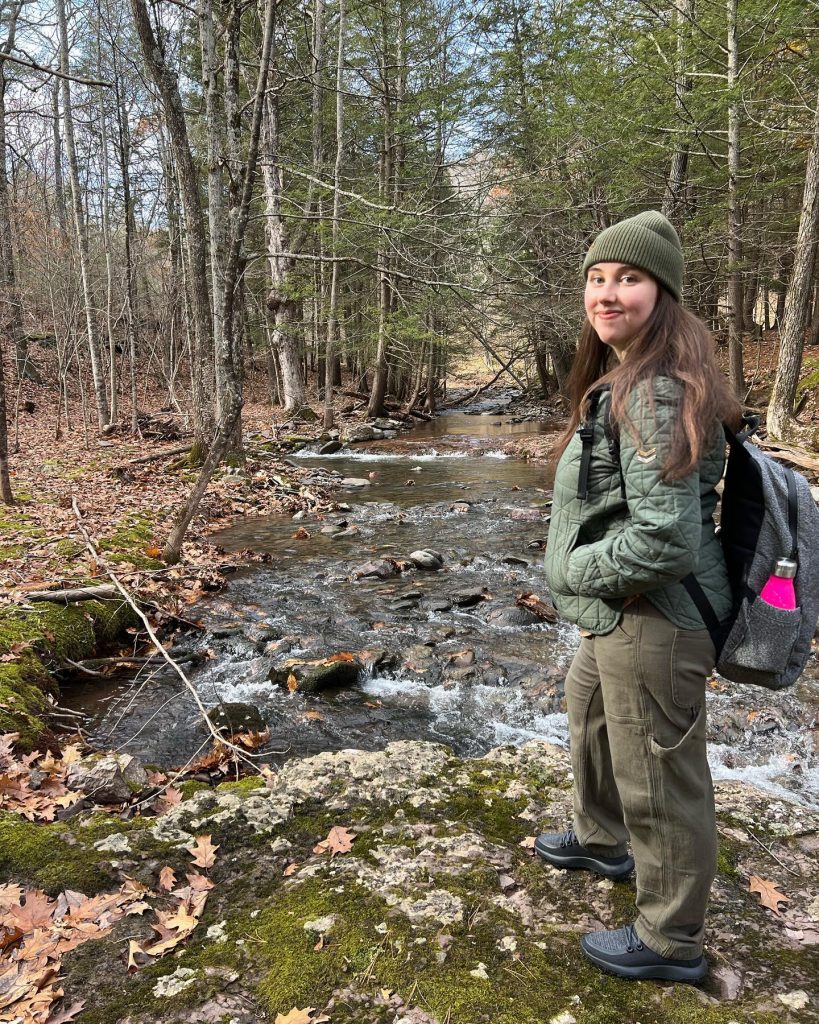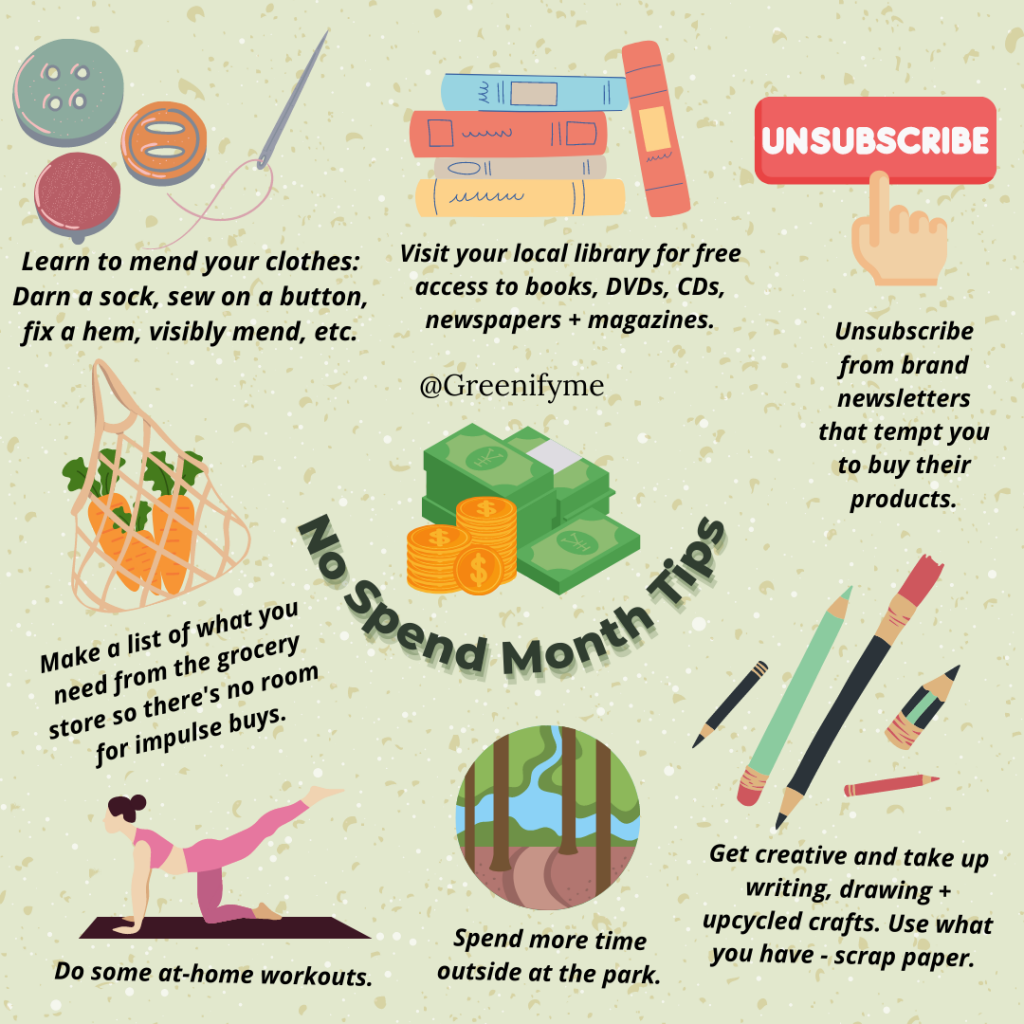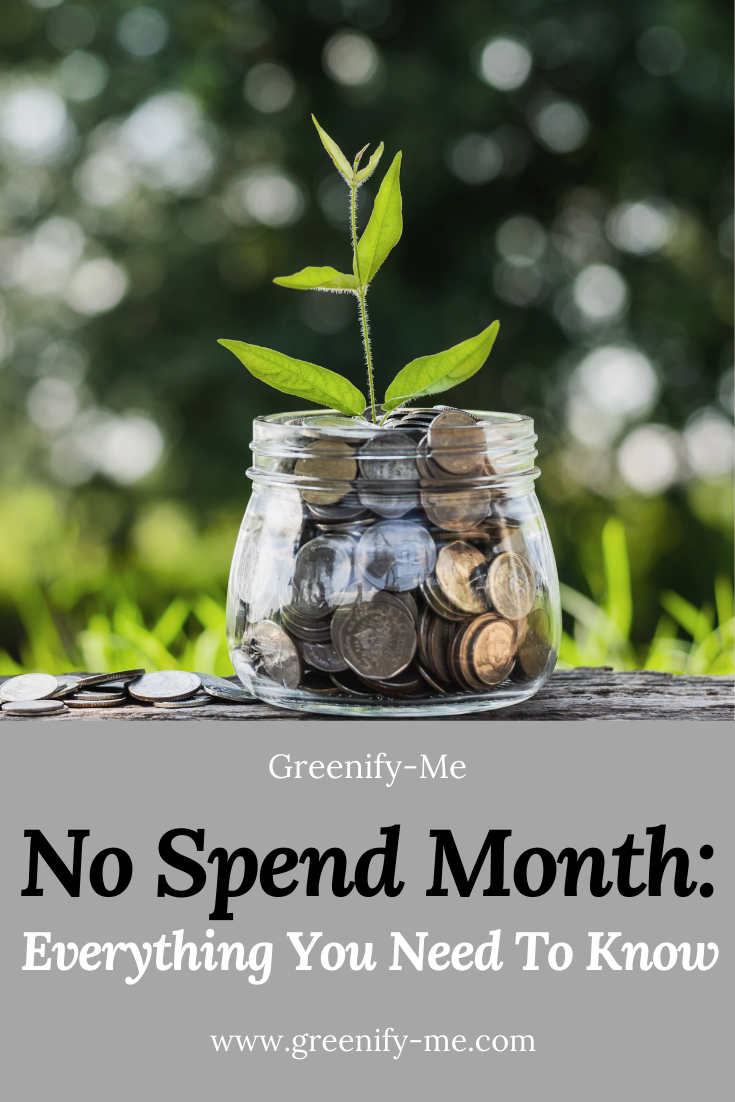If you didn’t know, I recently did a no spend month and periodically shared my insights with my Instagram (and newsletter) audience. It was a really eye opening experience! I think no spend January resonates with a lot of people because the holidays tend to drain us financially. So it’s nice to not purchase anything for a month afterwards! That said, you can do a no spend month (or a week!) any time of year. Some people have even challenged themselves to do it a full year! Doubt I’d be able to do that myself, but I admire the discipline. Here’s everything you need to know about a No Spend Month – and my personal tips for success.
No Spend Month: Everything You Need To Know

What is a 30 Day No Spend challenge?
Essentially, it’s a challenge where you go 30 days without splurging on luxury/impulse buys. It’s about only spending on the absolute essentials. 30 days is typically a month’s time.
Here’s what a no spend month basically entails: You don’t spend on anything except essential items like food and housing. Of course there are few exceptions. Lets dive in.
During a no spend month, you’re allowed to purchase + pay for:
- Food & drink (but nothing excessive/non-essential, like takeout + Starbucks)
- Essentials (aka things like toothpaste, underwear, shampoo, work supplies, etc.)
- Housing + bills (rent, mortgage, anything that keeps a roof over your head essentially).
What you’re forced to cut out during a no spend month:
- Impulse buys (I mean, do I REALLY need another blouse?)
- Excessive purchases (I don’t need that in two different colors)
- Anything that’s not essential, luxury items (so no new games, no makeup, no hair products, etc.)
Of course, you’re welcome to make your own rules and adjustments as you see fit. These are just general guidelines. If you’d like, you could even do a no spend month geared towards a specific item or theme (like clothing, makeup or Starbucks coffees only).

Why do a no spend month?
There are several reasons you should consider a no-spend month. Personally, I started mine because I wanted to save money after splurging on gifts for loved ones over the holidays. And, I wanted less STUFF in my life.
- Saves you money. This is the most obvious benefit. When you’re not frivolously spending, it’s easier to watch your bank account grow. This can help you save up for a trip, wedding, new home or new car. Or just help you rack up a few extra $$!
- Gives insight into spending habits. Sometimes, we lose track of exactly where our money is going. A no spend month helps us see it better! This will help you create better spending habits moving forward.
- Curbs impulse buys. Do you struggle with an addiction to shopping? Find yourself purchasing new items almost every other day online? A no spend challenge might help you.
- Reduces waste. I found purchasing less items really helped me reduce waste during my no spend month. After all, a lot of items come with unnecessary packaging – even some eco-friendly items. Less stuff? The better. It also helps you use what you already have!
- Fights mass consumerism. In todays day and age, we’re told to spend on something at practically every second of every day. This isn’t good for our wallets or the planet – every product is a spent resource after all. No spend months help fight overconsumption.

What is considered no spend?
Outside of essential bills and groceries, a no spend day, week, month or year involves no money being spent. That means no shopping for knick knacks, collectibles, fashion, beauty, etc. Nothing that’s not absolutely essential to getting you by. That also means no takeout or café trips (unless someone else decides to treat you out).

How do you not spend money?
My biggest suggestion for not spending money is to understand your triggers and create a budget for yourself.
Are you triggered to spend money every time you step foot into the mall? Or are you triggered by all the brand promotions in your email inbox? Finding these triggers out will tell you what your next course of action will be (like avoiding the mall and unsubscribing from newsletters).
Regarding creating a budget, allot a certain amount of money aside for groceries, bills and essentials and stick to it. Having a little book on hand to do this might be helpful. You can also record the amount you spend on essentials in the book too. This will help you keep track of what’s left of your budget.

What to do with the extra money you save?
Anything you want! But if you’re looking for some ideas…
- Invest it! Open up a bank account, or better yet a high yielding saving account. But try to only support banks that fund fossil fuels (aka, avoid the big bad four: JP Morgan Chase, Citibank, Wells Fargo, and Bank of America). According to the Banking on Climate report, these banks have invested the most money in fossil fuels, and JP Morgan Chase leading the way at $317 billion!
- Use it to buy some zero waste essentials you normally would consider pricy. Cause lets face it, sometimes zero waste isn’t always affordable.
- Save up for something important. Put the money towards a new piece of furniture, a new car, a new home, a vacation, a gift, your wedding – anything really.

How do you stick to no spending months?
It takes determination to stick to no spending months. But I find checking your bank account and seeing how much you’re saving is a great motivating factor too! Even if you just save a few hundred, that’s better than nothing!
Some habits I encourage you to adopt that will make this challenge easier:
- Separate want from need. Do you REALLY need an extra blouse? More makeup? Will it actually make you happy in the long term or just short term?
- Limit exposure to internet. If screen time can lead to impulse purchases for you, de-plugging may be a good option.
- Take up an analog hobby. By definition, an analog hobby is a creative outlet that doesn’t involve electronic devices. So journaling in a book, sewing, painting, drawing on paper, gardening, breadmaking, candle making, etc. are all considered analog hobbies. Most of them require minimal equipment or supplies, if any.

How does a no spend month work?
To achieve a no spend month, you avoid putting yourself in situations you’ll have to spend on non-essential items. And, you get crafty/creative. Think frugal thoughts!
Here’s a general structure for you to follow that might help:
- Make a Buy Nothing Jar (optional – but a good visual). Place in the jar the money you would have spent on a “thing”. This could be every time you’re tempted to spend on something like a dress, makeup, video games, etc. Put in however much it would’ve cost you to purchase that item. At the end of the month, see what you have and how much you’ve saved not splurging on those items. Put the money towards an experience or a trip you want to take! Or simply put it back in your savings.
- Take note of your progress + purchases. In a notebook at the end of each day, write down any purchases you’ve made and what they were. Include your slip ups (it’s okay, you’re human, but get back on the horse the next day!). This will help you track your progress.
- Go through your fridge + pantry. Try to take account of all the food you haven’t used yet. Then make a goal to use it up this month!
- Declutter. Trust me – this challenge will make you want to. That’s probably because there won’t be any new stuff coming in, so you’ll have an opportunity to. I suggest donating, upcycling, and recycling anything you don’t need.
- DIY and craft items you need. Do you really need napkins or paper towels when you could just sew some from cloth? Not only is this better for the environment, it saves you money too. See what items you can craft using the items you have around the home. Another example? I love making DIY toothpaste from peppermint essential oil, baking soda and coconut oil (3 ingredients I always have on hand)!
- Ask loved ones if you can borrow their items (when need be). Instead of buying new, why not borrow an item you need from someone who already has it? Saves you money + promotes a circular economy!

16 tips to cut back on spending
Want to know my top 16 tips for a successful no spend month? Get ready!
Be prepared
Buy groceries for the week with meal ideas in mind. Stock up on the ingredients you’ll need. And write out a list so you are less tempted to make impulse purchases (I’m looking at you, CHIPS…).
Meal prep
Cook some things ahead of time to SAVE time (like rice + chicken). Chop vegetables and fruit + store in glass containers so they’re easy to incorporate into meals. This will make you less tempted to order takeout during your no spend month!
Make homemade lunches
This will help you avoid purchasing pre-made lunch at work in the cafeteria. I love making myself a salad the night before, but sandwiches and soups are great too.
Bring your own coffee
Brew it at home and put it in a reusable mug. That way you won’t have to buy something at Starbucks or Dunkin.
Make breakfast ahead of time
Quick things like overnight oats or chia seed pudding is good. Also, you could bake a batch of vegan muffins ahead of time.
Use public transport
Take the train or the bus instead of spending money on gas (though gas is consider an essential purchase, it’s a good idea to limit how much you’re using for both wallet + environment). Use your bike, walk and carpool with people whenever you can.
Unsubscribe from brand newsletters + delete emails
This is a HUGE one that saved me so much money during my no spend month, I’m sure of it. I also deleted tons of emails! Did you know undeleted emails actually have a carbon footprint? Honestly I should write a blog post about it because when I first learned that it blew my mind.
Do at-home workouts
YouTube has TONS of workout videos to keep you busy for hours. I personally love GrowWithJo’s walking workouts and have been doing them for weeks! Most of them don’t require any equipment. Also, use whatever equipment you have on hand (already have weights, a yoga mat and a treadmill in your home? Utilize those instead of paying for the gym).
Mend your clothing
See a tear, a rip or a loose button? Don’t chuck it and use it as an excuse to buy something new. Instead, see it as an opportunity to get better at mending your clothes. Learn how to darn a sock, sew on a button and fix a hem. There are several tutorials on YouTube to check out. Asking a grandma never hurts either!
Visit your local library
There are SO many free resources here it’s uncanny. Libraries offer free access to books, DVDs, CDs, newspapers, magazines, computers, classes, printers and copiers. Supporting them helps create a more circular economy! This is one of the last places you can just be without spending money.
Get out into nature
You don’t have to spend any money here, plus it’s good for your physical + mental health. Go for a bike ride, a hike, a swim, or even a walk! Take up bird watching or foraging. Start a garden. There’s so much nature has to offer!
Use what you have
This goes for just about everything – food, clothes, makeup, etc. Use up what you have before even thinking of buying more. Make it last. If that means squeezing every last drop out of your toothpaste tube, so be it!
Avoid going out to places that require you to spend
Resist temptation altogether. Don’t go to shops, cafes, restaurants, or malls. This will make your month so much easier!
Break out the puzzles, video games, DVDs, CDs and books
Find things lying around your home that can entertain you without spending a dime. Use what you already have – there might be items you completely forgot about.
Get creative and take up writing, drawing + upcycled crafts
Use what you have – scrap paper is always a great option for drawing and writing. Also old notebooks! For upcycled crafts, you can do a lot with empty milk jugs + cartons, toilet + paper towel roles, and empty aluminum cans. Think bird feeders, plant containers and pencil holders! It won’t cost you a thing.
Host a clothing swap
This is a fun one you can do with friends + family alike. Ask them to bring the clothes they no longer like/fit into and make it into a hang out. Serve some food, play some music and pick out some clothes without having to spend a dime! It’s also a great way to keep clothing in use and out of landfills.

What do you think of these no spend month tips? Are you going to try it out for yourself? Let me know in the comments!
For more low waste and budget friendly tips, check out these 8 No-Cost Plastic Free July Hacks that can be applied any time of year.
Enjoyed this post? Be sure to share it! If you like my content, sign up for my newsletter to get notified every time I write a new blog post. To support me even further, please consider buying me a cup of tea to help support my blog.

